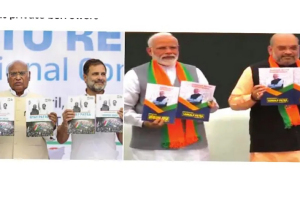The Bengali community lives across the globe and Bangla is one of the most widely spoken languages in the world, but the market for its cinema has not been nurtured properly, says National Award winning filmmaker Aniruddha Roy Chowdhury.
Chowdhury, best known for “Antaheen” and “Pink”, believes the screen density needs to be increased in small towns of West Bengal.
“I agree with the fact that every story has its certain reach, but a good distribution system can make a difference. Bengali is the sixth most spoken language in the world, and our neighbouring country Bangladesh has a huge potential market, along with other international markets where Bengalis are living.
“Unfortunately, the Bengali film market has not been nurtured properly yet,” the filmmaker told IANS on the sidelines of the Ficci Frames 2018 here.
“Yes, it is true that Hindi has a larger reach within the country, but if we look at the European countries, whether it is Hindi or Bengali, for them, it is an Indian film. Therefore, we Bengali filmmakers should have a proper agent who can position our films in the right market. Though the film and cultural exchanges are happening between us and Bangladesh, it is yet to happen on a much larger scale,” he added.
Coming from an ad film background, Chowdhury made his debut in the Hindi film industry in 2016 with the much-celebrated film “Pink”. While his past Bengali movies “Anuranan” and “Antaheen” were critically acclaimed and won National Awards, it took a Hindi film for Chowdhury to earn fame.
But he shrugged it off.
“I really do not look at this negatively. In that film (‘Pink’), Amitabh Bachchan was one of the key actors. The mileage that he can bring to a film, who else can? And because of the same reason, the film got a good market and distribution,” he said of the movie, which highlighted how a girl’s “No” means “No”.
Asked if language creates a barrier in making regional films reach people, and if dubbing is a potential solution to that, Chowdhury said: “See, we make a film with a certain nuance, and if you are dubbing it in a different language, certain elements get lost in translation. Therefore, I neither watch nor encourage dubbed films. Subtitling is a good option.”
Citing an example of his debut film “Anuranan”, he said: “If you compared the Hindi dubbed version of the film with its original Bengali one, you can find the difference. That is precisely the reason why we should watch the film with subtitles. We do the same thing when we are watching a Korean or an Iranian film.”
With the advent of digital platforms, the footfalls at theatres are going down while films are reaching people through laptops, iPads and smartphones.
According to the filmmaker, screen density and well-maintained theatre halls are the two most important elements that should be taken into consideration.
“I come from Asansol, a small town in West Bengal. When my relatives went to watch my first film ‘Anuranan’, they came back from the theatre before the film finished because there were rats running under the seats and bad smell was coming from washroom.
“If the authorityies are not maintaining the existing theatre halls or increasing the screen numbers considering our population, how can we expect people to come to the theatre,” he questioned.











